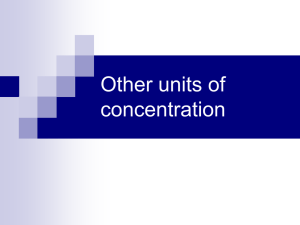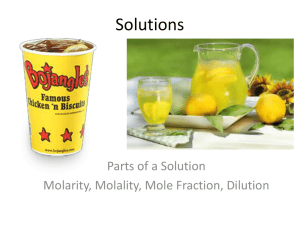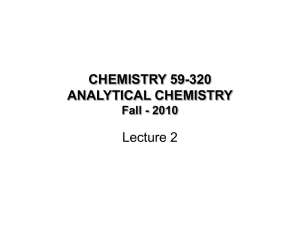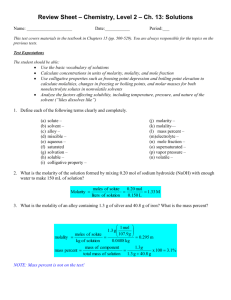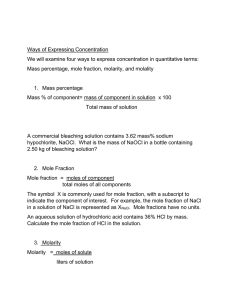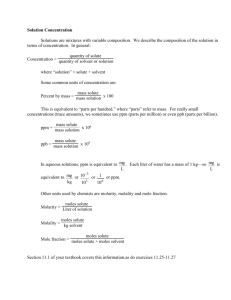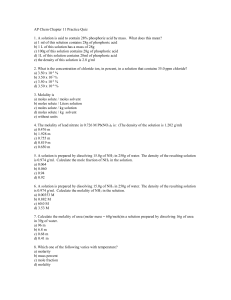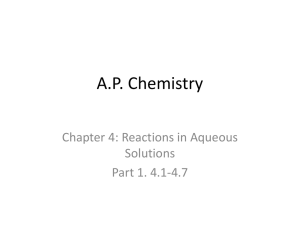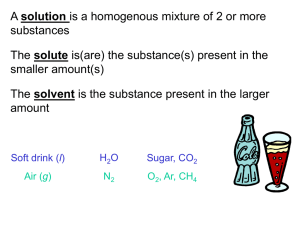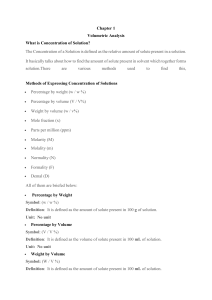Concentration - Mr. Walsh's AP Chemistry
advertisement
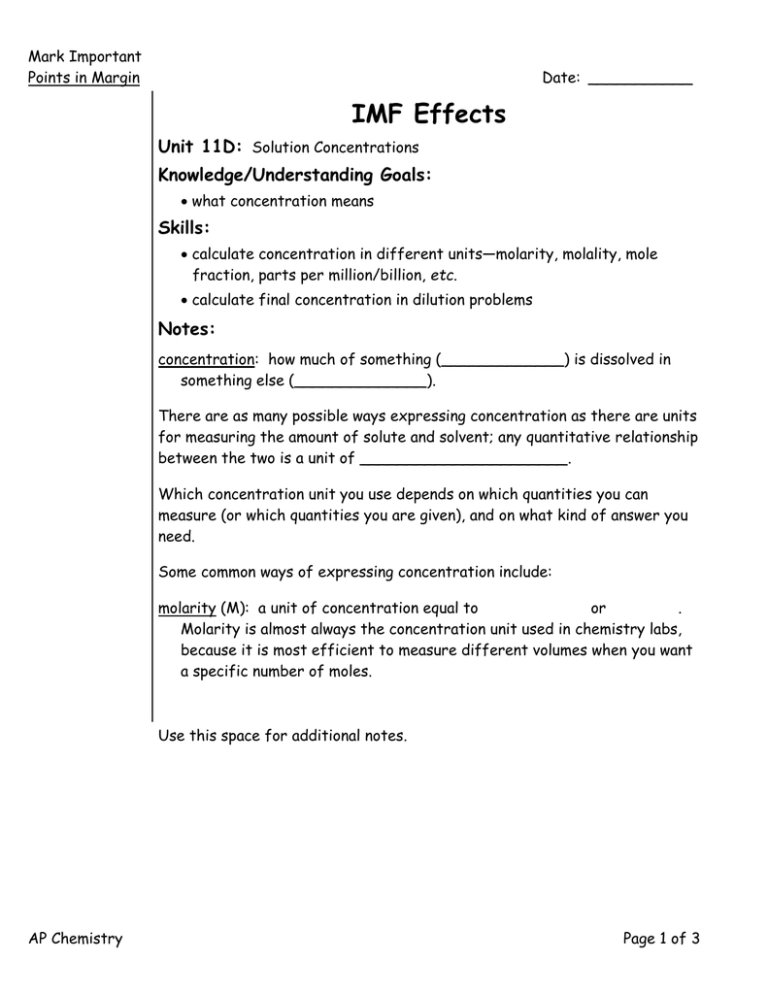
Mark Important Points in Margin Date: ___________ IMF Effects Unit 11D: Solution Concentrations Knowledge/Understanding Goals: what concentration means Skills: calculate concentration in different units—molarity, molality, mole fraction, parts per million/billion, etc. calculate final concentration in dilution problems Notes: concentration: how much of something (_____________) is dissolved in something else (______________). There are as many possible ways expressing concentration as there are units for measuring the amount of solute and solvent; any quantitative relationship between the two is a unit of ______________________. Which concentration unit you use depends on which quantities you can measure (or which quantities you are given), and on what kind of answer you need. Some common ways of expressing concentration include: molarity (M): a unit of concentration equal to or . Molarity is almost always the concentration unit used in chemistry labs, because it is most efficient to measure different volumes when you want a specific number of moles. Use this space for additional notes. AP Chemistry Page 1 of 3 Mark Important Points in Margin Concentration molality (m): a unit of concentration equal to or . Molality is sometimes used in large-scale processes in industry, because it is difficult to measure very large volumes precisely, but it is easy to precisely measure the mass of the solvent in a tank (using a strain gauge attached to the tank supports), and then add a specific mass of solute. Molality is also used to calculate properties of the ___________ (as opposed to properties of the solute), such as colligative properties. mole fraction (χ): a unit of concentration that relates the moles of one component to the total moles. For example, the mole fraction of substance “A” would be: Mole fraction is used to relate properties of one component of a mixture to the properties of the bulk mixture, such as when relating the partial pressure of a gas to the total pressure of the mixture. parts per million (ppm) and parts per billion (ppb): a unit of concentration that relates the parts (usually by mass) of one component to one million (106) or one billion (109) parts (also by mass) of the _______________. Parts per million and parts per billion are often used to describe the concentration of a contaminant that is present only in a trace amount. One example is the concentration (level) of arsenic in drinking water, which is required to be less than 10 ppb. Use this space for additional notes. AP Chemistry Page 2 of 3 Mark Important Concentration Points in Margin As mentioned above, there are many other ways of describing concentration. g solute For example, solubilities are often expressed in . 100 g H2O Calculating Concentrations As dimensional analysis would suggest, you can express concentration by dividing the top unit (describing the ____________) by the bottom unit (describing the ________________). For example, you would express the molarity of a solution made by dissolving 0.25 mol of CuSO4 in enough water to make a total volume of 500 mL (0.5 L) of solution as follows: 0.25 mol CuSO4 0.5 0.5 L solution mol CuSO 4 L 0.5 M CuSO4 Dilution problems A dilution problem is simply a conservation of matter problem; the moles of solute before dilution must equal the moles of solute after dilution. Note that dimensional analysis tells us that molarity times volume equals moles of solute mo/ mol . Almost every molarity and dilution problem involves using MV to convert to moles at some point. ________________ of acids is a related problem; the problem usually requires calculating the moles of H+ ions or OH− ions added, given the concentration of acid or base titrant and the volume added. For example, if you added 50 mL of 0.1 M H2SO4, this means you added: 0.05 0.1 mol H2SO4 2 mol H 0.01 mol H 1 solution 1 mol H2SO4 Use this space for additional notes. AP Chemistry Page 3 of 3
